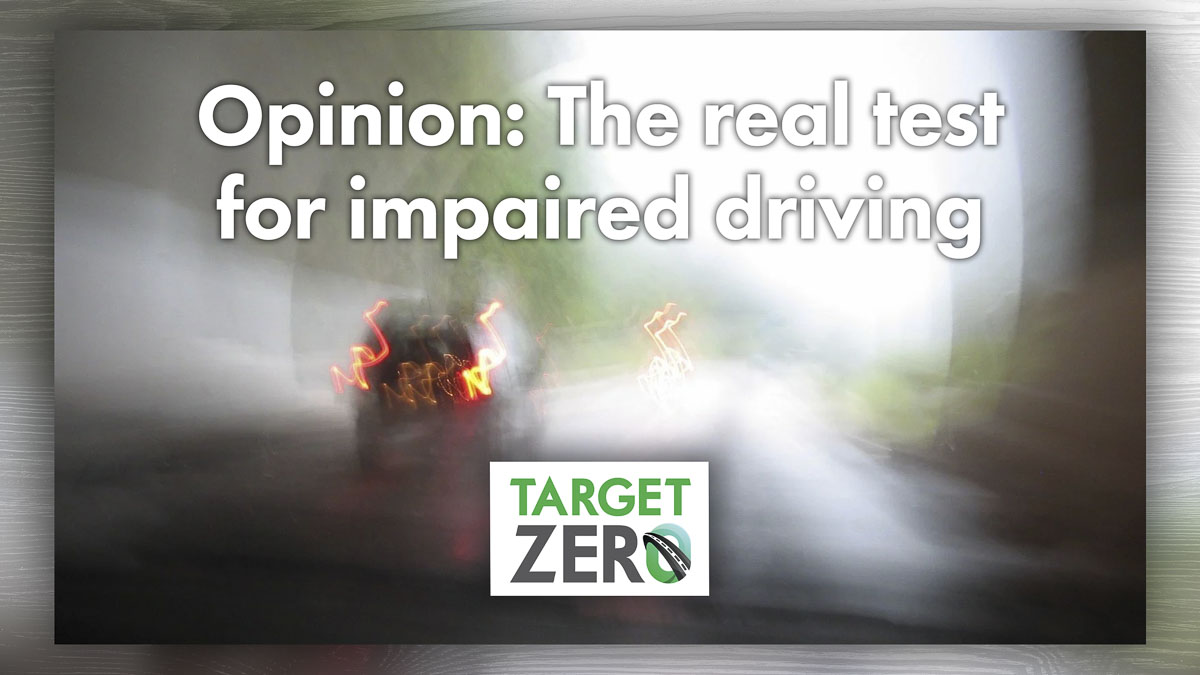
Target Zero Manager Doug Dahl discusses tests for impaired drivers
Doug Dahl
The Wise Drive
Q: How can a police officer know if a driver is impaired by drugs? With alcohol there are roadside tests like walking a line, and a breath test. Are there similar tests for drug impairment? Alcohol has a .08 limit, and now cannabis has a limit, but are there limits for other drugs?
A: It’s time for a pop quiz: At what point has a driver had too much alcohol to legally drive? This isn’t exactly a trick question, but if your answer was a blood alcohol content (BAC) of .08, well, you’re wrong. Surprised? I’ll explain.
It’s true that the per se limit for alcohol-impaired driving in Washington is .08 BAC, commonly called the legal limit. But common terms can also be wrong. A driver can be arrested for DUI below a .08 BAC. Having a per se limit in the law sets the point at which a driver could get a DUI with no additional evidence. The blood alcohol level alone is enough.

Imagine this scenario: A driver weaves over the fog line, and then drifts across the centerline into the oncoming lane. An officer observes this and pulls the driver over. When the officer approaches the vehicle, the driver rolls down the window just enough to hear the officer. (And we’re going with “he” because of statistics. Over 75 percent of impaired driving fatalities involve male drivers.) The driver refuses to do any field sobriety tests (like walking the line, as you mentioned) or provide a breath sample, but the officer can smell alcohol coming out of the car, hears the driver’s slurred speech, and watches as he fumbles to slide his driver license through the barely open window.
Does the officer have enough evidence to arrest the driver for DUI? The law says, in part, that a person is guilty of impaired driving if they drive a vehicle “while the person is under the influence of or affected by intoxicating liquor, cannabis, or any drug.” The driver in this example was clearly impaired, in this case by alcohol. And even if the driver later decides to provide a breath sample and it comes in at .07 BAC, it’s still a DUI. The law doesn’t require that a driver reaches .08 to get a DUI, and plenty of people have been arrested with a lower alcohol level. The effects of alcohol begin long before reaching a .08 BAC.
As the law states, DUI includes impairment from other drugs, but recognizing it takes some additional expertise. When you read the above scenario, you probably spotted the driver’s behaviors as consistent with alcohol impairment. Alcohol is by far the most commonly used impairing substance (62 percent of adults drink alcohol; 19 percent of adults use cannabis, the next most frequently used drug), so plenty of us have witnessed the effects of alcohol. But could you list the common indicators for narcotics or hallucinogens?
Many officers have had additional training to recognize the effects of various drugs, and some have become drug recognition experts. These officers are able to identify when a driver is impaired by a specific category of drug. That’s important; we don’t want people getting arrested for DUI because of diabetic shock or other medical emergency, even if some of the symptoms are similar to impairment. And we don’t want officers allowing an impaired driver to stay on the road because they don’t notice the indicators of impairment for less common drugs.
The real threshold for violating our DUI law is the moment a person drives while affected or impaired by alcohol or any other drug.
The Wise Drive is hosted by Doug Dahl, a Target Zero manager for the Washington Traffic Safety Commission.
Also read:
- Opinion: In-n-Out Burger is so much more than fast food for so many of usPaul Valencia shares why In-n-Out Burger means more than just fast food for countless fans as Ridgefield nears its grand opening and Vancouver’s location begins construction.
- Opinion: Washington’s June 2025 budget revisions – revenue up spending up moreMark Harmsworth of the Washington Policy Center critiques the state’s latest budget revisions, warning that new taxes—not organic growth—are driving revenue. He calls for fiscal restraint and long-term reform.
- Opinion: Pedestrian control signalsDoug Dahl explains Washington state law regarding crosswalks and pedestrian signals, offering safety insights and common misunderstandings about traffic control at intersection
- Letter: ‘How can five part-time legislators without research support or reliable access to information serve as an effective check on six full-time elected executives’Bob Zak expresses agreement with recent opinions on the Clark County Charter’s imbalance and endorses John Ley’s transit preference while questioning light rail costs and Council effectiveness.
- POLL: Should the Clark County Clerk remain an elected position?Following public opposition, Clark County Council dropped a proposal to make the clerk an appointed role. Readers can now weigh in through this week’s poll on whether the clerk should remain elected.










